Table of Contents
Want to know how to store potatoes to stay afresh and ready to eat after months? It’s not only you alone who wants to keep potatoes; people have done it across civilisations throughout history. Some possible reasons are limited agricultural yield, a great trade asset, and extensively used in barter transactions and gifting.
Potatoes were first domesticated around 5000 – 8000 BC in southern Peru or the extreme northwestern part of Bolivia. Since then, they have been a staple diet in many civilisations and cultures.
They are rich in nutrients like carbs, potassium, and fibre, helping you in digestion. Even though too many potatoes will lead to weight gain because of excessive carbs. One cannot remove them from their diet because of the health benefits that they offer.
Moving on to how to store potatoes, there are more straightforward and complex ways to make them last for months. Let’s look at them:
Ways to Store Potatoes for Months
1. Storing in Cool Place
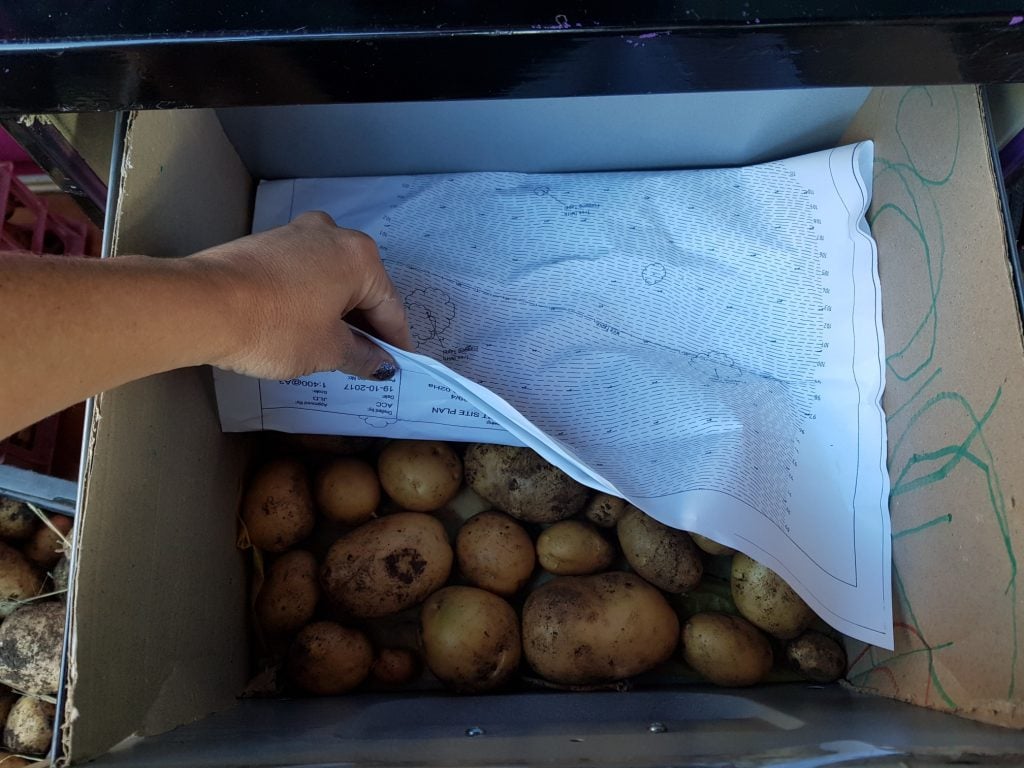
The temperature has a lot of say in how long your potatoes will last. The colder temperatures suit potatoes as it slows down the bacterial activity inside the potatoes. The recommended temperature is 43 – 50 degrees Fahrenheit. Colder temperatures will slow down the process of sprouting, which usually shows itself in the spring. Sprouting is the first sign of decaying healthy potatoes. However, if you plan to plant them, you require sprouting.
It’s been proven that storing potatoes in colder places extends the life of inherent Vitamin C content, keeping them healthier and fresh for months compared to storing them in warmer conditions.
2. Avoid washing
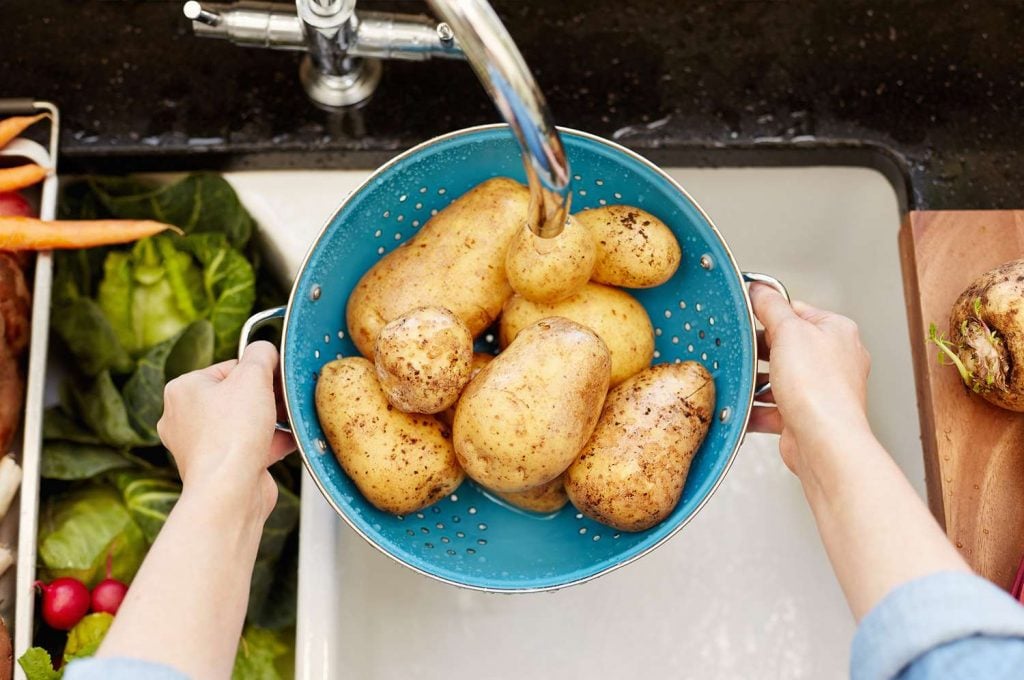
If you want to save your potatoes for months, the best thing you can do for them is not to wash them and keep them raw, even though it’s tempting to clean them since they are grown underground and are usually dirty.
Do you know why to keep them unwashed?
Because if water seeps into them, potatoes will start to hold moisture, which promotes bacterial growth in the potatoes, ultimately leading to the development of bacteria and fungus. Water accumulation is why unexpected rains during potato harvesting season cause much turmoil to the farmers and substantial economic losses. Moreover, nobody wants to buy decayed potatoes and their shelf life gets severely reduced for the farmers to store them.
When ready to use the potatoes, gently rinse them under cold water to remove dirt or debris. It is important not to scrub or peel the potatoes until just before use, as this can also remove a protective layer on the skin that helps to extend their shelf life. By avoiding washing potatoes until you are ready to use them, you can minimise the risk of accumulating moisture and decrease your risk of spoilage, allowing them to last longer in storage.
3. Never Store with Onions
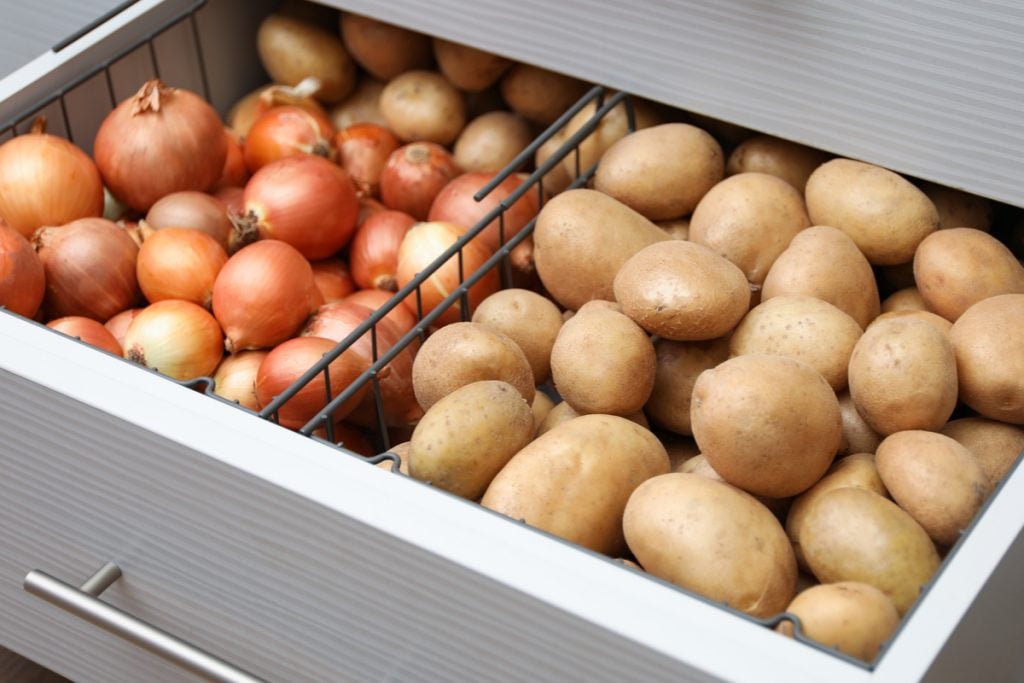
Did you know several fruits and vegetables promote the ripening of potatoes by just being nearby? How does it happen? Ethylene gas, a ripening gas produced by other fruits and vegetables while ripening can also make potatoes age faster and increase the chances of them getting sprouted. The sprouting rate increases because ethylene gas can trigger the release of a hormone called auxin in potatoes, which stimulates the growth of new sprouts.
So make sure that even though storing them together and saving crucial kitchen space is convenient, it’s not recommended, especially if you want to keep your potatoes for months. Sprouting is not a clear indicator that potatoes are unsafe to eat. For instance, if the sprouting and the green dots are minimal, you can still consume them. However, too much sprouting might lead to toxicity.
4. Ensure Proper Airflow
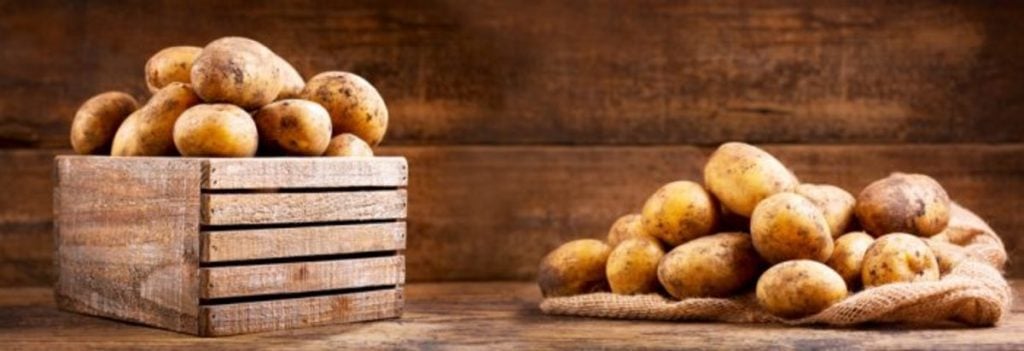
Everything boils down to moisture if you want to savour your potatoes for months. Potatoes act like living organisms and continue to breathe after being harvested. As they breathe, they release moisture and carbon dioxide, which can build up in a confined space and create a humid environment. Unfortunately, this can lead to the growth of bacteria and fungi, which can cause the potatoes to rot.
Providing adequate airflow can help reduce the build-up of moisture and carbon dioxide and promote even temperature distribution. Good ventilation be done by storing potatoes in a well-ventilated area or in a container with ventilation holes to allow air to circulate. For example, suppose all the potatoes are placed in a basket with no airflow. Restriction of air movement will lead to the accumulation of moisture and encourage the production of fungus and bacteria. For this reason, it’s recommended that you store potatoes in a basket which has proper airflow.
5. Role of Temperature Distribution
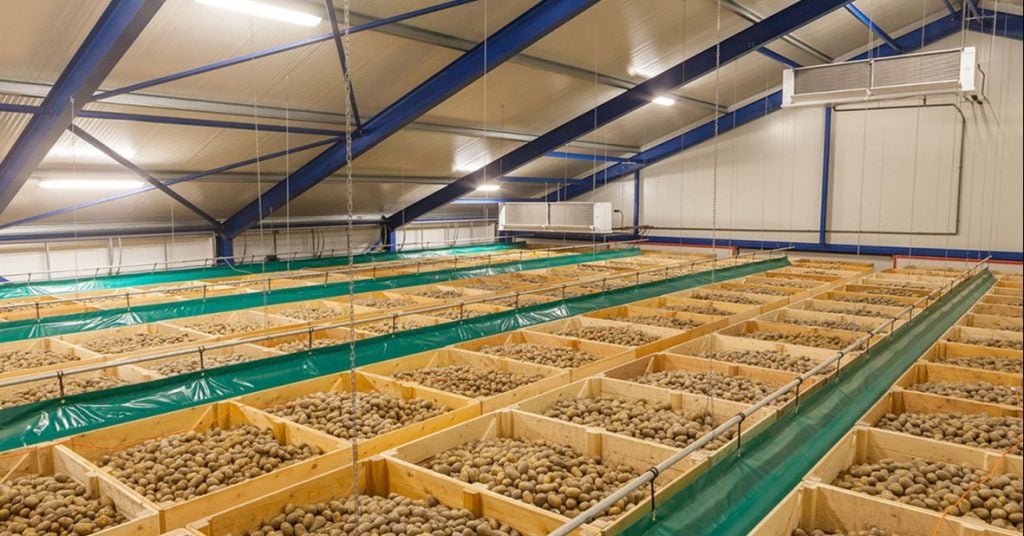
The temperature distribution is crucial when you want to store your potatoes for an extended period, as it can impact their quality and shelf life. Ideally, it would help if you kept potatoes in a cool, dry, and well-ventilated area with a consistent temperature between 43-50°F (7-10°C). This temperature range is slightly above freezing but still cool enough to slow down the natural process of sprouting and decay.
You must ensure that the temperature is evenly distributed throughout the storage area to prevent hot and cold spots. If the temperature is too high or too low, it can cause the potatoes to sprout, spoil, and eventually lose their flavour and texture. Potatoes stored in a location where the temperature fluctuates too much, such as in a garage or shed exposed to extreme temperatures, can also affect their quality and shelf life. Extreme heat or cold can cause the potatoes to sprout or rot more quickly, while fluctuating temperatures can cause them to dry out or become soggy faster than usual.
Therefore, it is essential to ensure proper temperature distribution when storing potatoes to maintain optimal health of potatoes and extend their shelf life. You can find the right temperature by using a thermometer to monitor the temperature. This will guide you in keeping your potatoes away from extremely hot or cold areas and avoiding areas that see extreme temperature fluctuations in a day.
6. Rotate Your Stash
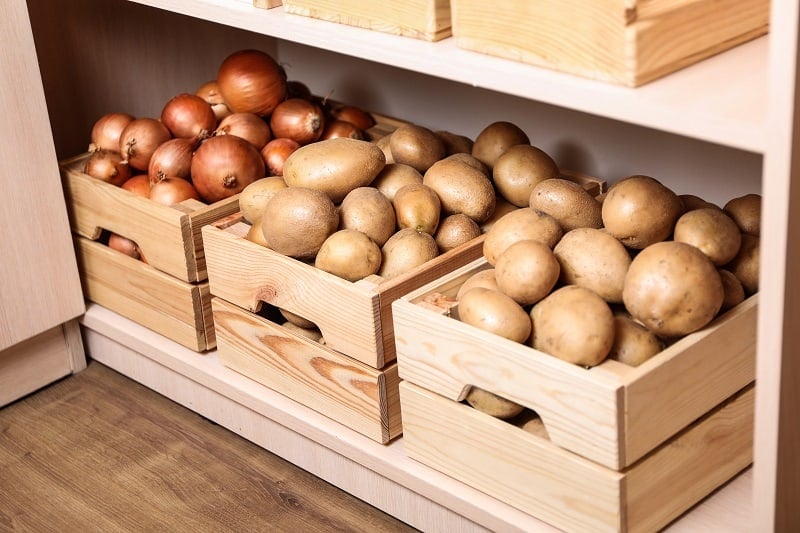
Rotating your stash is necessary to ensure that your store of potatoes remains fresh. For example, when you need a potato, you can look for the ones about to go wrong or show signs of sprouting. Using the first is better; otherwise, other potatoes are also at risk. As we talked earlier about potatoes acting like living organisms after harvesting, it becomes crucial to rotate your potato stash. Since it can help to prevent moisture and temperature imbalances. When potatoes are stored for an extended period, they release moisture and carbon dioxide, creating a humid environment. We have already established how a moist environment harms healthy potatoes’ health and shelf life. By rotating them, you can ensure that air circulates evenly around all the potatoes and that any trapped moisture is removed.
Moreover, using the old potatoes first is better than using the newer ones. Because newer ones will have better shelf life than the old potatoes, that’s why, it’s an excellent practice to stash new potatoes below the old ones.
7. No to Refrigerators
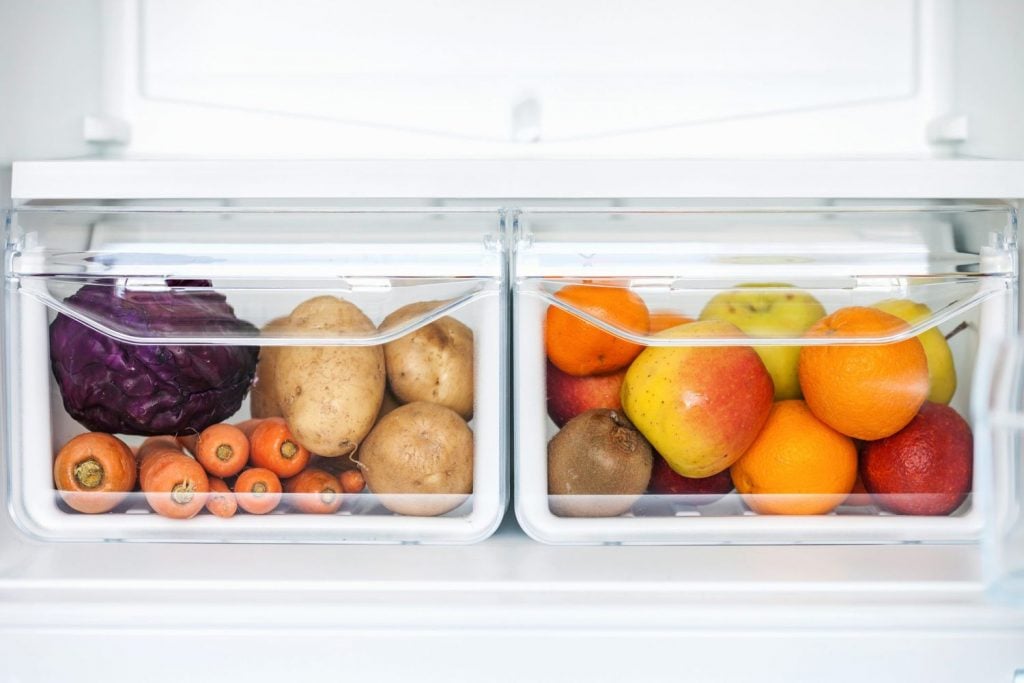
When potatoes are stored in such cool temperatures, their inherent starch in them starts to break down and start getting converted to sugar. This leads to a change in the taste of your potatoes. That is why its recommended that no matter how warm your home is, potatoes are never to be stored in the fridge.
On the other hand, you can find the coldest place in your home, be it any dark corner that has a little lower temperature than your home.
However, if you have to store potatoes in the fridge, there is a right way. Make sure you cut it into slices and let the moisture dry out completely before you store them away for months.
8. Selectively Storing
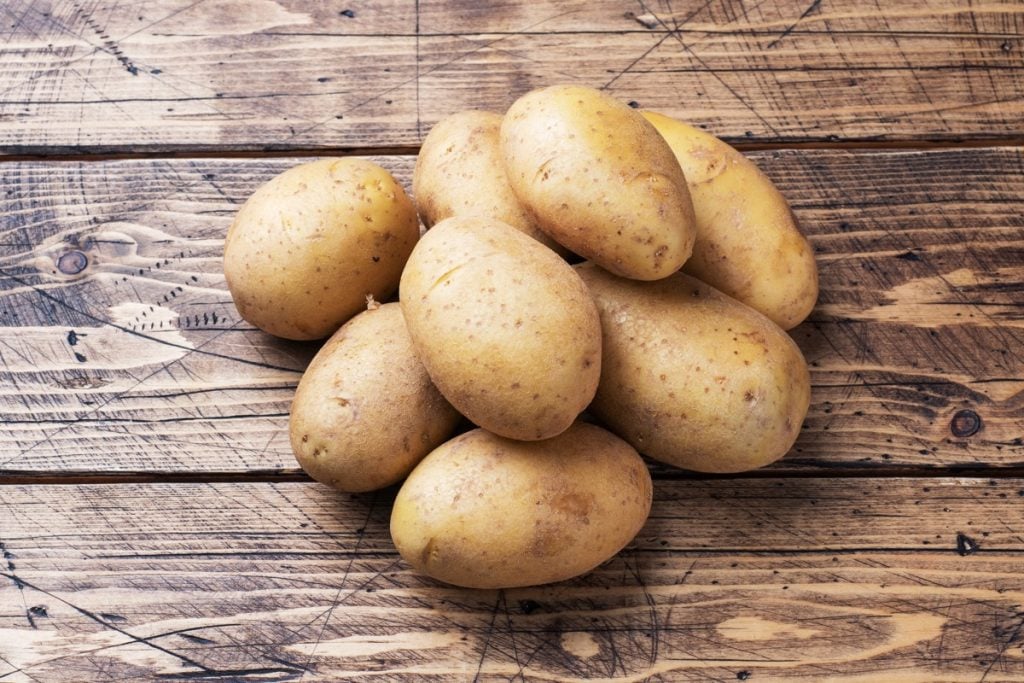
Neither all potatoes deserve to be saved nor come with a similar shelf life and freshness. So it’s crucial to store only food-quality potatoes when you plan to keep them for months so they don’t get mushy if mixed with one lousy potato. But how to know which potatoes to select?
Even though there is no hard and fast rule to follow while picking your potatoes, look for firm, smooth textured ones, preferably with no discolouration, cuts, or bruises. Following this will increase your chances of picking good quality potatoes, which you can store for months.
9. Constructing a Cellar
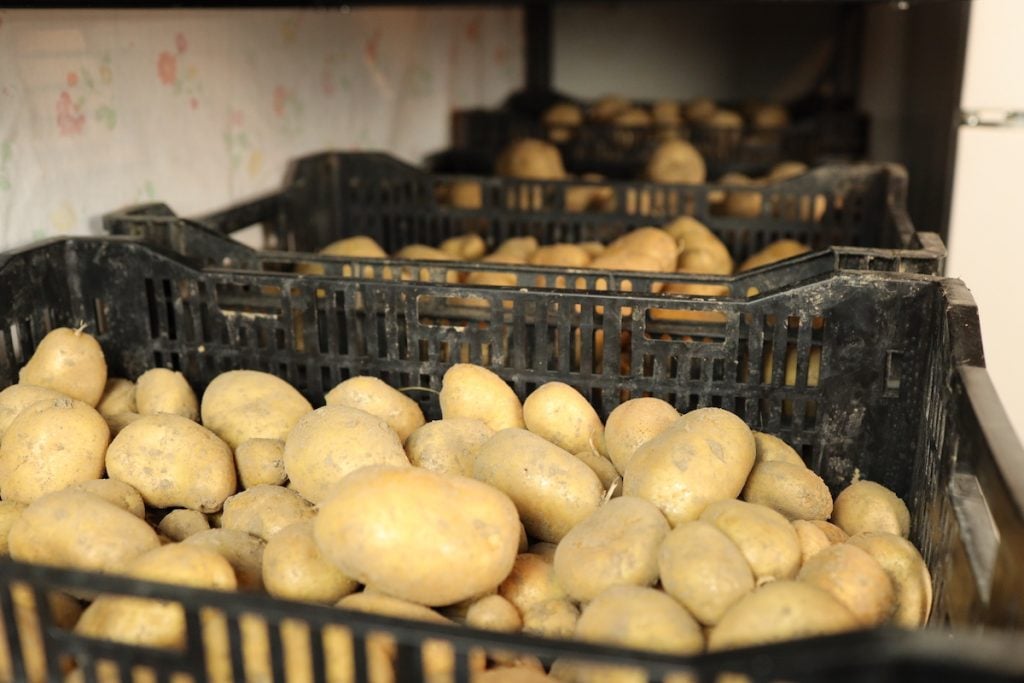
Traditionally, root cellars have been used in colder areas of the world to store food items to keep them fresh. Historically, countries like Russia, China, Korea, etc., used cellars to store vegetables. However, exposure to light can also cause potatoes to turn green and produce solanine, a toxic compound. Therefore, potatoes should be stored in a cool, dark, and well-ventilated place, such as a root cellar, pantry, or cool basement.
What’s so special about them?
Cellars are mostly made underground. However, finding them on the house’s roof is not uncommon. People store in cellars and pantries since they are not as cold as the temperatures outside, making them a safe space for fruits and vegetables like potatoes, green leafy vegetables, etc. Don’t worry if your house is not equipped with a root cellar or pantry; you can find a space in your home that is not as cold outside.
Feeling Ready to Keep Your Potatoes Tucked Away for Months
Potato is one of the most versatile vegetables since you can use it in many dishes and vegetables. And it makes sense since it offers several health benefits like a good source of fibre which aids in digestion, and vitamin C helps build immunity and fight infections. On top of that, it has potassium that helps lower blood pressure. The need for storage may arise for many reasons, like limited availability of potatoes, low agricultural yield, or surplus production. We hope these tips helped you store your potatoes for months. All these tips are scientifically backed, so it makes sense for you to incorporate them when keeping potatoes.
Any other practice that you guys follow in storing your potatoes for months?

![9 Simple Hacks for Storing Potatoes Fresh for Months! [UK]](https://www.thearches.co.uk/wp-content/uploads/Ways-To-Store-Potatoes-So-They-Last-Months.jpg)



